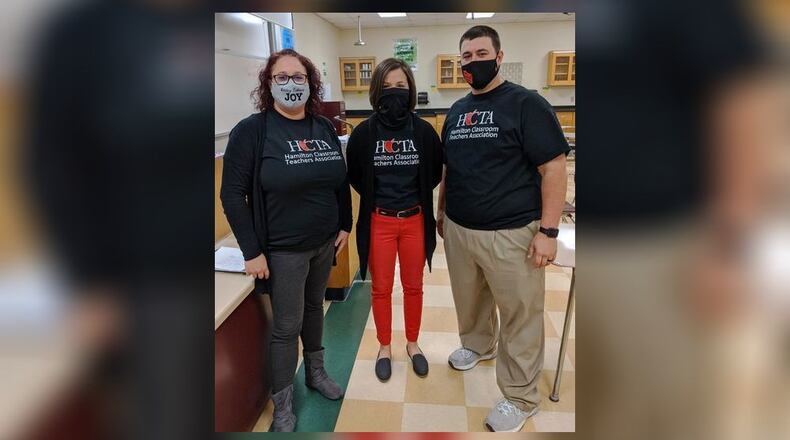“We have had this wonderful supply of food to help us sustain this volume through various sources, but that all ends, and it’s ending incrementally," he said. "We’ve had this amazing amount but it’s about to dry up.”
Now through Oct. 30, the HCTA is holding a food drive at each of the Hamilton City School District school buildings where students and the community can drop off canned and non-perishable food, as well as The Studio on Main Street in Hamilton. All food will be donated to the Open Door Food Pantry in Hamilton.
“We know a decent number of our students are in need, and it’s just a way to try to help them and their families out so they can enjoy the holidays like we all like to do," said Meagan Kendall, a science teacher at the Freshman school.
She said there is no specific goal in the first year of this effort, other than to collect as much as possible.
“We’re just happy to be doing it,” she said. “We want to make sure that our students can go home for the holidays and have plenty to eat with their families.”
Children who are well-fed also have a better chance at learning success, said Kendall. Hamilton restarted in-person education on Oct. 14.
“Being well-fed is a major component to being able to make sure students are in the right mindset to be able to get that education we’re trying to give them," she said. "Think about it, if you were in their position and you’re hungry, are you really want to try to sit there and try to learn anything when you’re basic need is not met.”
At the end of the month, the Farmers to Family food boxes program will end. Also, food supplies that foodbanks have received for the past two years due to the trade mitigation with China will end at the end of December.
Shared Harvest’s monthly food distribution events have plateaued at an average of 600 families per distribution, but that is still “concerning” as it’s three times higher than the number of families served before the novel coronavirus pandemic, Perdue said.
“Things like what (the HCTA) is doing are imperative and critical for our pantries to get the support they need to give food to supplement what we’re able to procure," he said.
Shared Harvest is developing a plan to prepare for the cutoff of food supplies, and turning to national food manufacturers, like Kelloggs, Nabisco and FritoLay, and local retailers “hoping that we could somehow increase the volume of donations that we’ve been getting," he said.
“We’re actively pursuing a plan to ensure that we have a consistent, stable amount of food," he said.
Shared Harvest can make any financial donation go further as every $1 donated can be converted into eight meals.
About the Author

